What defines a top .NET developer in 2025? For technology leaders assembling or scaling .NET development teams, a “top” developer is a full-spectrum engineer. Belitsoft offers cross-functional .NET talent - architects, full-stack engineers, DevOps, QA, and data scientists - who translate .NET best practices into secure production systems. Whether you’re modernizing a 20-year-old monolith or launching a cloud-native, AI-enabled SaaS, Belitsoft provides the top .NET engineers to make it happen.
General Skill Areas and Core .NET Proficiency
In 2025, the .NET platform powers high-traffic web applications, cross-platform mobile apps, rich desktop software, large-scale cloud services, and finely scoped microservices.
Hiring managers focus on the top .NET developers who not only excel in .NET 8/9+ and modern C# but also understand cloud-native patterns, containerization, event-driven and microservice designs, front-end, and automated DevOps. The most valuable .NET engineers are also experts in communication, empathy, and collaboration.
Candidates are expected to apply core object-oriented principles and the classic design patterns that turn raw language skill into clean, modular, and maintainable architectures.
High-performing apps demand expertise in asynchronous and concurrent programming (async/await, task orchestration), and design that keeps applications responsive under load.
Elite engineers push further, profiling and optimizing their code, managing memory and threading behavior, and squeezing every ounce of performance and scalability from the latest .NET runtime. All of this presupposes comfort with everyday staples - generics, LINQ, error-handling practices - so that solutions stay modern.
Belitsoft provides dedicated .NET developers who apply modern C# patterns, async practices, and rigorous design principles to deliver robust production-grade .NET systems.
.NET Software Architecture & Patterns
At the enterprise scale, today’s .NET architects must pair language expertise with architectural styles (microservices, Domain-Driven Design (DDD), and Clean Architecture).
Top .NET developers can split a system into independently deployable services, model complex domains with DDD, and enforce boundaries that keep solutions scalable, modular, and maintainable.
Underneath lies a working toolkit of time-tested patterns - MVC for presentation, Dependency Injection for inversion of control, Repository and Factory for data access and object creation - applied in strict alignment with SOLID principles to support codebases that evolve as requirements change.
Because “one size fits none”, so employers prize architects who can judge when a well-structured monolith is faster, cheaper, and safer than a microservice, and who can pivot just as easily in the other direction when independent deployment, team autonomy, or global scalability demand it.
The most experienced candidates can apply event-driven designs, CQRS, and other advanced paradigms where they provide benefit.
Web Development Expertise (ASP.NET Core & Front-End)
This end-to-end versatility – delivering complete, production-ready web solutions – is what hiring managers now prize.
Senior developers should craft ASP.NET Core, the framework at the heart of high-performance web architectures. They create REST endpoints with either traditional Web API controllers or the lighter minimal-API style, mastering routing, HTTP semantics, and the nuances of JSON serialization so that services remain fast, predictable, and versionable over time.
Seasoned .NET engineers know how to lock down endpoints with OAuth 2.0 / OpenID Connect flows and stateless JWT access tokens, then surface every route in Swagger / OpenAPI docs so front-end and third-party teams can integrate with confidence.
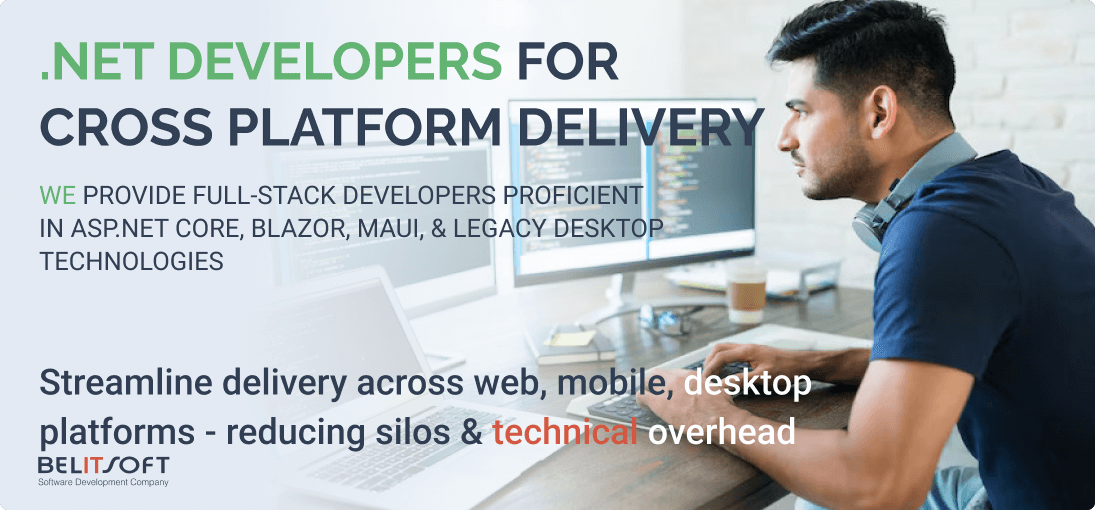
The strongest candidates step comfortably into full-stack territory: they “speak front-end”, understand browser constraints, and can collaborate - or even contribute - on UI work.
That means practical fluency in HTML5, modern CSS, and JavaScript or TypeScript, plus hands-on experience with the frameworks that dominate conversations: Blazor for .NET-native components, or mainstream SPA libraries like React and Angular. Whether wiring Razor Pages and MVC views, hosting a Blazor Server app, or integrating a single-page React front end against an ASP.NET Core back end, top developers glide without friction.
Belitsoft offers ASP.NET Core MVC developers who are skilled in crafting maintainable, high-performance web interfaces and service layers.
.NET Desktop & Mobile Development
Top-tier .NET engineers add business value wherever it’s needed. The most adaptable .NET professionals glide among web, desktop, and mobile project types, reusing skills and shared code whenever architecture allows.
On the desktop side, Windows Presentation Foundation (WPF) and even legacy Windows Forms still power critical line-of-business applications across large enterprises. Mastery of XAML or the WinForms designer, an intuitive feel for event-driven UI programming, and disciplined use of MVVM keep those apps maintainable and testable.
Modern cross-platform development in .NET revolves around .NET MAUI, the successor to Xamarin, which lets a single C#/XAML codebase target Android, iOS, Windows, and macOS. Engineers should understand MAUI’s shared-UI and platform-specific layers and know how to recall Xamarin’s native bindings.
.NET Cloud-Native Development & Microservices
Top .NET developers are hired for their ability to architect cloud-native solutions.
That means deep proficiency with Microsoft Azure: App Service for web workloads, Azure Functions for serverless bursts, a mix of Azure Storage options and cloud databases for durable state, and Azure AD to secure everything. .NET engineers should design applications to scale elastically, layer in distributed caching, and light up end-to-end telemetry with Application Insights.
Familiarity with AWS or Google Cloud adds flexibility, yet hiring managers prize mastery of Azure’s service catalog and operational model.
At the same time, cloud expertise should be linked with distributed-system thinking. Top developers decompose solutions into independent services - often microservices - pack them into Docker containers, and orchestrate them with Kubernetes (or Azure Kubernetes Service) so that each component can scale, deploy, and recover in isolation.
Containerization aligns naturally with REST, gRPC, and message-based APIs, all of which must be resilient and observable through structured logging, tracing, and metrics.
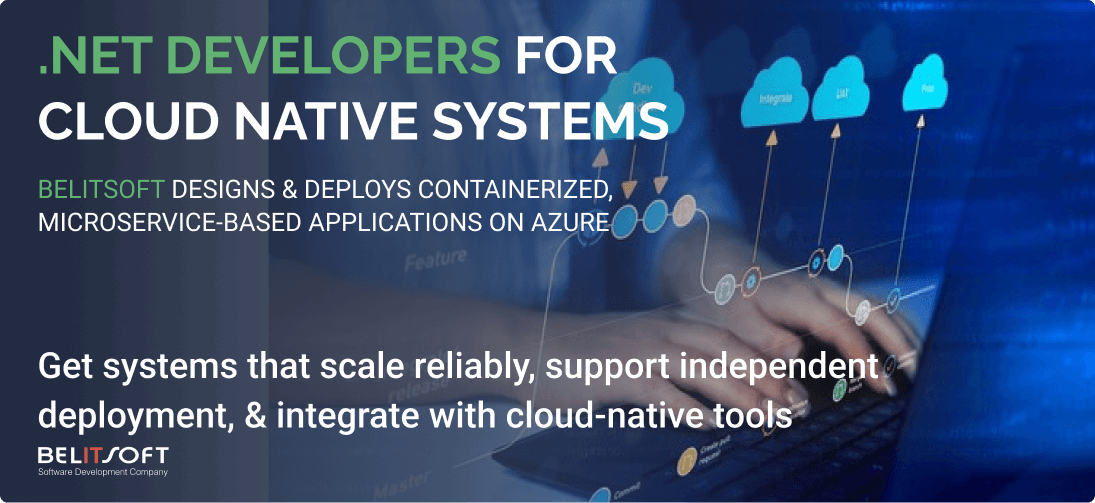
Serverless and event-driven patterns round out the toolkit. Leading candidates can trigger Azure Functions (or AWS Lambdas) for elastic event processing, wire components together with cloud messaging such as Azure Service Bus or RabbitMQ, and bake in cloud-grade security - identity, secret storage, encryption.
Data Management & Databases for .NET Applications
Effective data handling is the backbone of every real-world .NET solution, so top developers pair language skill with database design and integration expertise.
On the relational side, they write and tune SQL against SQL Server - and often PostgreSQL or MySQL - designing normalized schemas, crafting stored procedures and functions, and squeezing every ounce of performance from the query plan.
They balance raw SQL with higher-level productivity tools such as Entity Framework Core or Dapper, understanding exactly when an ORM’s convenience begins to threaten throughput and how to mitigate that risk with eager versus lazy loading, compiled queries, or hand-rolled SQL.
Because modern workloads rarely fit a single storage model, elite engineers are equally comfortable in the NoSQL and distributed-store world. They reach for Cosmos DB, MongoDB, Redis, or other cloud-native options when schema-less data, global distribution, or extreme write velocity outweighs the guarantees of a relational engine - and they know how to defend that decision to architects and finance teams alike.
LINQ mastery bridges both worlds, turning in-memory projections into efficient SQL or document queries while keeping C# code expressive and type-safe.
They also configure performance: asynchronous data calls prevent thread starvation, connection pools are sized and monitored, indices align with real query patterns, and hot paths are cached when network latency threatens user experience.
.NET Integration
A top-tier .NET engineer is a master integrator. They make disparate systems - modern microservices, brittle legacy apps, and SaaS - talk to one another reliably and securely, often as part of broader application migration initiatives.
Whether it’s a classic REST/JSON contract, a high-performance gRPC stream, or an event fan-out over a message queue, they design adapters that survive time-outs, retries, schema drift, and version bumps.
Payment gateways, OAuth and OpenID providers, shipping services, analytics platforms - they wrap each in well-tested, fault-tolerant clients that surface domain events. Rate-limit handling, token refresh, and idempotency are table stakes.
They lean on the right integration patterns for the job. Webhooks keep systems loosely coupled yet immediately responsive. Asynchronous messaging de-risks long-running workflows and spikes in traffic. Scheduled ETL jobs reconcile data at rest, moving and transforming millions of records without locking up live services.
AI .NET DevelopmentWith clean data in hand, they bring intelligence into the stack.
For vision, speech, language understanding scenarios they wire up Azure Cognitive Services, abstracting each REST call behind strongly typed clients and retry-aware wrappers.
When custom modeling is required, they reach for ML.NET or ONNX-runtime, training or importing models in C# notebooks and packaging them alongside the application with versioned artifacts.
At runtime, these developers surface predictions as domain-level features: a next-best-offer service returns product suggestions, a fraud-risk engine flags suspicious transactions, a dynamic-pricing module produces updated SKUs - all with confidence scores and fallback rules. They monitor drift, automate re-training, and expose explainability dashboards so the business can trust (and audit) every recommendation.
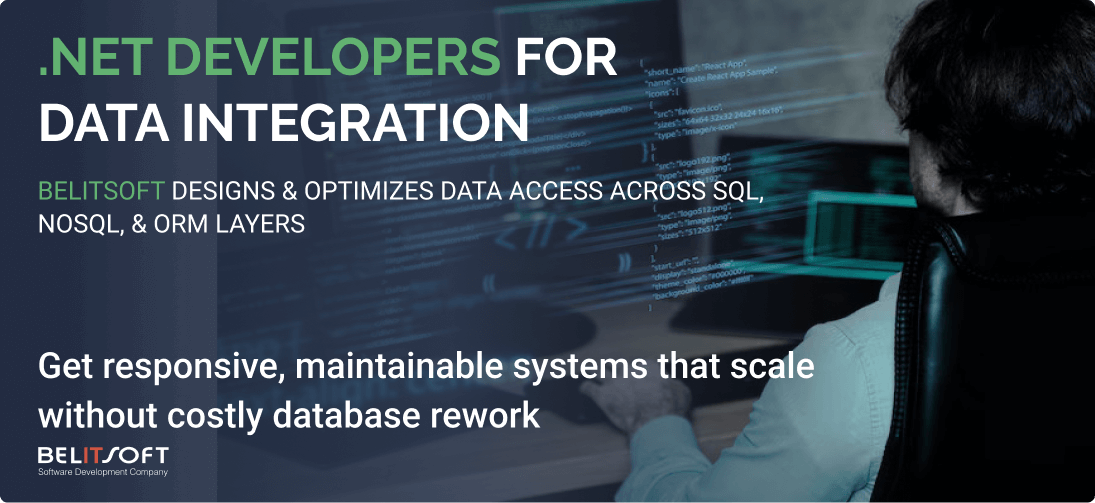
DevOps & Continuous Delivery for .NET Software
By 2025, employers expect every senior developer to shepherd code from commit all the way to production. That starts with Git fluency: branching strategies, disciplined pull-request workflows, and repository hygiene that keeps multiple streams of work flowing.
On each push, elite engineers wire their projects into continuous-integration pipelines - Azure DevOps Pipelines, GitHub Actions, Jenkins, or TeamCity - to compile, run unit and integration tests, and surface quality gates before code merges.
Strong candidates craft build definitions that package artifacts - often Docker images for ASP.NET Core microservices - and promote them through staging to production with zero manual steps. They treat infrastructure as code, using ARM templates, Bicep, or Terraform to spin up cloud resources, and they version those scripts in the same Git repos as the application code to guarantee repeatability.
Container orchestration gets first-class treatment too: Kubernetes manifests or Docker Compose files live beside CI/CD YAML, ensuring that the environment developers test locally is identical to what runs on Azure Kubernetes Service or Azure Container Apps.
Automation ties everything together. Scripted Entity Framework Core migrations, smoke tests after deployment, and telemetry hooks for runtime insights are all baked into the pipeline so that every commit marches smoothly from "works on my machine" to "live in production".

Testing, Debugging & Quality Assurance for .NET
Excellent .NET developers place software quality at the core of everything they do. Their first line of defense is a rich suite of automated tests. Unit tests - written with xUnit, NUnit, or MSTest - validate behavior at the smallest grain, and the code itself is shaped to make those tests easy to write: dependency-injection boundaries, clear interfaces, and, in many cases, Test-Driven Development guide the design.
Once individual units behave as intended, great developers zoom out to integration tests that exercise the seams between modules and services. Whether they spin up an in-memory database for speed or hit a real one for fidelity, fire REST calls at a local API, or orchestrate messaging pipelines, they prove that the moving parts work together.
For full-stack confidence, they add end-to-end and UI automation - Selenium, Playwright, or Azure App Center tests that click through real screens and journeys. All of these checks run continuously inside CI pipelines so regressions surface within minutes of a commit.
When something slips through, top .NET engineers switch seamlessly into diagnostic mode, wielding Visual Studio’s debugger, dotTrace, PerfView, and other profilers to isolate elusive defects and performance bottlenecks. Static-analysis gates (Roslyn analyzers, SonarQube, FxCop) are another option to flag code-quality issues before they run.
Industry-specific Capability Sets of Top. NET Developers
Top .NET Developers Skills for Healthcare
Building software for hospitals, clinics, laboratories, and insurers starts with domain fluency. Developers must understand how clinicians move through an encounter (triage → orders → documentation → coding → billing), how laboratories return results, and how payers adjudicate claims.
That knowledge extends to the big systems of record - EHR/EMR platforms - and to the myriad of satellite workflows around them such as prior-authorization, inventory, and revenue-cycle management.
Because patient data flows between so many actors, the stack is defined by interoperability standards. Most messages on the wire are still HL7 v2, but modern integrations increasingly use FHIR’s REST/JSON APIs and, for imaging, DICOM.
Every design decision is filtered through strict privacy regimes - HIPAA and HITECH in the US, GDPR in Europe, and similar laws elsewhere - so data minimization, auditability, and patient consent are non-negotiable.
From that foundation, .NET teams tend to deliver five repeatable solution types:
- EHR add-ins and clinical modules (problem lists, med reconciliation, decision support).
- Patient-facing web and mobile apps - ASP.NET Core portals or Xamarin/.NET MAUI mHealth clients.
- Integration engines that transform HL7, map to FHIR resources, and broker messages between legacy systems.
- Telemedicine back-ends with SignalR or WebRTC relaying real-time consult sessions and vitals from home devices.
- Analytics and decision-support pipelines built on Azure Functions, feeding dashboards that surface sepsis alerts or throughput KPIs.
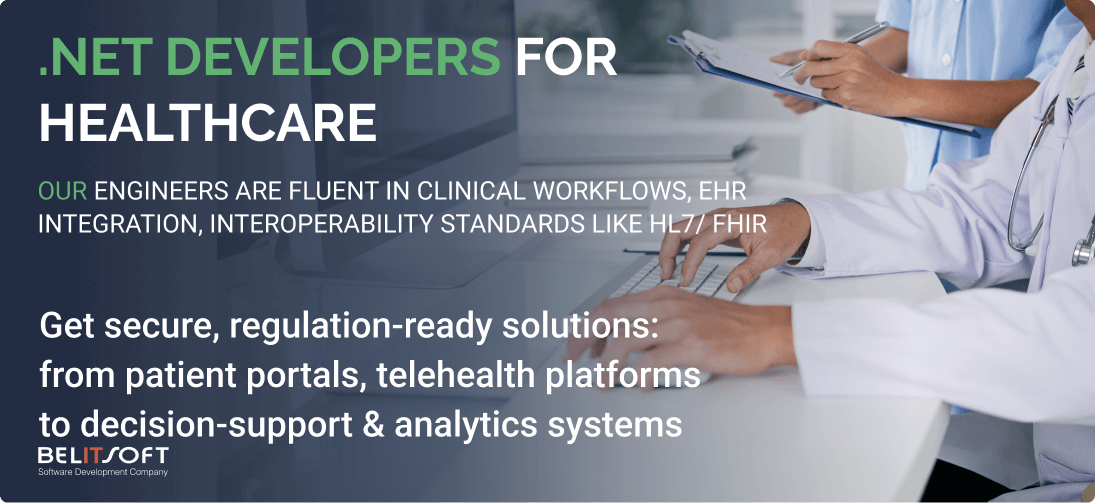
Each role contributes distinct, healthcare-specific value:
- Backend developer implements secure, RBAC-protected APIs, codifies complex rules (claim adjudication, prior-auth, scheduling), ingests HL7 lab feeds, persists FHIR resources at scale.
- Frontend developer crafts clinician and patient UIs with WCAG/Section 508 accessibility, masks PHI on screen, secures local storage and biometric login on mobile.
- Full-stack developer delivers complete flows - like appointment booking - covering server- and client-side validation, audit logging, and push notifications.
- Solution architect selects HIPAA-eligible cloud services, enforces PHI segregation, encryption-in-transit/at-rest, and geo-redundant DR, layers Identity (AD B2C/Okta) and zero-trust network segmentation, wraps legacy systems with .NET microservices to modernize safely.
Top .NET Developers Skills for Manufacturing
Modern manufacturing software teams must have deep domain knowledge. This means knowing how factory-floor operations run - how work orders flow, how quality checkpoints are enforced, and where operational-technology (OT) systems converge with enterprise IT.
Industry 4.0 principles - sensor-equipped machines stream data continuously, enabling smart, data-driven decisions. Developers therefore need fluency in industrial protocols such as OPC UA (and increasingly MQTT) as well as the landscape of MES and SCADA platforms that tie production lines to upstream supply-chain processes like inventory triggers or demand forecasting.
.NET practitioners typically deliver three solution patterns:
- IoT telemetry platforms that ingest real-time machine data - often via on-premises edge gateways pushing to cloud analytics services.
- Factory-control or MES applications that orchestrate workflows, scheduling, maintenance, and quality tracking, usually surfaced through WPF, Blazor, or other rich UI technologies.
- Integration middleware that bridges shop-floor equipment with ERP systems, using message queues and REST or gRPC APIs to achieve true IT/OT convergence.

Each role contributes distinct value:
- Backend developers build the high-volume ingestion pipelines - Azure IoT Hub or MQTT brokers at the edge, durable time-series storage in SQL Server, Cosmos DB, or a purpose-built TSDB, and alerting logic that reads directly from PLCs via .NET OPC UA libraries.
- Frontend developers craft dashboards, HMIs, and maintenance portals in ASP.NET Core with SignalR, Blazor, or a React/Angular SPA, optimizing layouts for large industrial displays and rugged tablets.
- Full-stack developers span both realms, wiring predictive-maintenance or energy-optimization features end-to-end - from device firmware through cloud APIs to UX.
- Solution architects set the guardrails: selecting open protocols, decomposing workloads into microservices for streaming data, weaving in ERP and supply-chain integrations, and designing for near-real-time latency, offline resilience, and security segmentation within the plant.
Top .NET Developers Skills for Finance (banking, trading, fintech, accounting)
Financial software teams need an understanding of how money and risk move through the system - atomic debits and credits in a ledger, compounding interest, the full trade lifecycle from order capture to clearing & settlement, and the models that value portfolios or stress-test them.
Equally important is the regulatory lattice: PCI-DSS for cardholder data, AML/KYC for onboarding, SOX and SEC rules for auditability, MiFID II for best-execution reporting, and privacy statutes such as GDPR.
Interop depends on industry standards - FIX for market orders, ISO 20022 for payments, plus the card-network specifications that dictate tokenization and PAN masking.
On that foundation, .NET teams tend to ship five solution types:
- Core-banking systems for accounts, loans, and payments
- Trading and investment platforms - low-latency engines with rich desktop frontends
- FinTech back-ends powering wallets, payment rails, or P2P lending marketplaces
- Risk-analytics services that run Monte Carlo or VaR calculations at scale
- Financial-reporting or ERP extensions that consolidate ledgers and feed regulators

Within those patterns, each role adds finance-specific value:
- Backend developers engineer ACID-perfect transaction processing, optimize hot APIs with async I/O and caching, and wire to payment gateways, SWIFT, or market-data feeds with bulletproof retry/rollback semantics.
- Frontend developers craft secure customer portals or trader desktops, streaming quotes via SignalR and layering MFA, CAPTCHA, and robust validation into every interaction.
- Full-stack developers own cross-cutting features - say, a personal-budgeting module - spanning database, API, and UI while tuning end-to-end performance and hardening every layer.
- Solution architects decompose workloads into microservices, choose REST, gRPC, or message queues per scenario, plan horizontal scaling on Kubernetes or Azure Apps, and carve out PCI-scoped components behind encryption and auditable writes.
Top .NET Developers Skills for Insurance
Insurance software teams must understand the full policy lifecycle - from quote and issuance through renewals, endorsements, and cancellation - as well as the downstream claims process with deductibles, sub-limits, fraud checks, and payouts.
They also model risk and premium across product lines (auto, property, life, health) and exchange data through the industry’s ACORD standards.
All of this runs under a tight web of regulation: health lines must respect HIPAA. All carriers face the NAIC Data Security Model Law, GDPR for EU data subjects, SOX auditability, and multi-decade retention mandates.
From that foundation, top .NET practitioners deliver five solution types:
- Policy-administration systems that quote, issue, renew, or cancel coverage.
- Claims-management platforms that intake FNOL, route workflows, detect fraud, and settle losses.
- Underwriting & rating engines that apply rule sets or ML models to price risk.
- Customer/agent portals for self-service, document e-delivery, and book-of-business management.
- Analytics pipelines tracking loss ratios, premium trends, and reserving-adequacy metrics.

Each role adds insurance-specific value:
- Backend developer implements complex premium/rate calculations via rule engines, guarantees consistency on data that must live for decades, ingests external data sources (credit, vehicle history), carries out large-scale legacy migrations.
- Frontend developer crafts dynamic, form-heavy UIs with conditional questions and accessibility baked in, secures document uploads with AV scanning and size checks.
- Full-stack developer builds end-to-end quote-and-bind flows - guest vs. authenticated logic, schema + APIs, frontend validation - all hardened for fraud resistance.
- Solution architect wraps mainframes with .NET microservices behind an API gateway, enforces single source of truth and event-driven consistency, designs RBAC, encryption, DR, and integrates AI services (like image-based damage assessment) on compliant Azure infrastructure.
Belitsoft connects you with .NET development experts who understand both your domain and tech stack. Whether you need backend specialists, full-stack teams, or architecture guidance, we support delivery across the full range of .NET solutions. Contact for collaboration.
Recommended posts
Portfolio
Our Clients' Feedback


















.png)
.jpg)
.jpg)
.jpg)
.jpg)
.jpg)
.jpg)
.jpg)
.jpg)
.jpg)
.jpg)
.jpg)
.jpg)
.jpg)
.jpg)
.jpg)
.jpg)
.jpg)
.jpg)






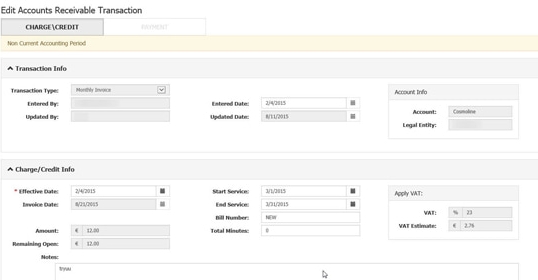

















We have been working for over 10 years and they have become our long-term technology partner. Any software development, programming, or design needs we have had, Belitsoft company has always been able to handle this for us.
Founder from ZensAI (Microsoft)/ formerly Elearningforce